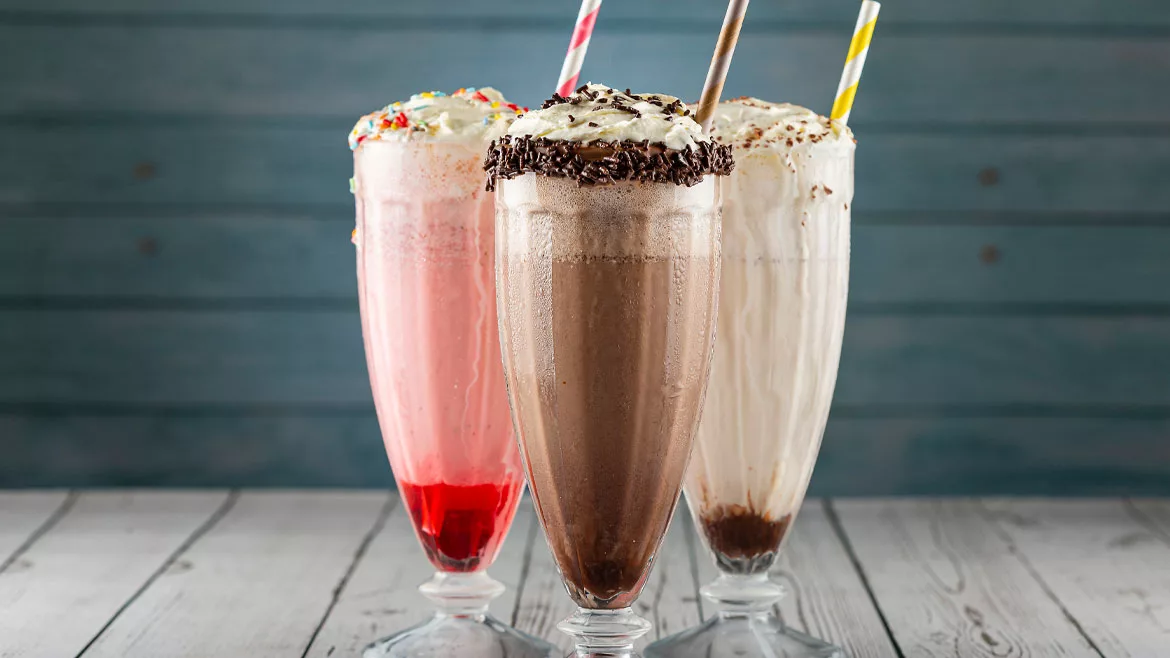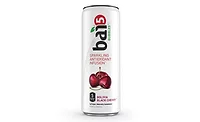Shrink and stretch labels maximize shelf appeal
Shrink and stretch labels impact brands, reinforce safety

Helping products stand out on store shelves while providing value-added solutions, packaging materials manufacturers continue to stretch their capabilities to give beverage-makers dramatic labels that feature eye-catching colors, specialty inks and soft-touch finishes that connect with consumers.
With an ability to cover a range of bottle shapes with 360-degree graphics, shrink and stretch labels have a favorable impact on brand marketing, says Louis Iovoli, senior vice president of Rochester, N.Y.-based Hammer Packaging.
“Beverage-makers want to have their product stand out on the shelf. To accomplish this goal, the bottle shape, material and label solution all have to interact to generate the look and feel the brand wants to portray,” Iovoli says. “Shrink sleeves allow the brand team more flexibility to integrate unique bottle shapes with a 360-degree graphic area. Most importantly, it allows for the bottle itself to be unique.
“Shape is also used for marketing appeal,” he continues. “For example, a twisted shape bottle may be named ‘Twister’ or an orange can be molded in the neck [of a bottle] for orange juice. Again, shrink sleeves allow the opportunity for the graphics to enhance the bottle design for whatever the purpose the brand is trying to accomplish.”
Don Earl, president of Overnight Labels, Deer Park, N.Y., echoes similar sentiments. “The beverage industry is an extremely competitive marketplace. Because of their 360-degree coverage, shrink sleeves allow the marketer to make a big impact on a crowded shelf,” he says. “Shrink sleeves can conform to most shaped bottles. They offer 360-degree graphics from top to bottom. They hide uneven fill lines, and there are special materials that offer full UV protection (for dairy products).”
Pressure-sensitive labels can be difficult to adhere to specially shaped bottles, while traditional cut-and-stack labels don’t have as much space for promotional purposes, Earl adds. “Shrink sleeves allow the marketer to use the full bottle real estate. And if the label designer is clever enough, the shape can enhance the graphics as well,” he says.
On-pack promotions
The proliferation of products in the beverage marketplace, along with personalization trends and the need for tamper-evident protection also are benefiting the shrink sleeves market, says Cassandra Yu, associate product manager for Rapid Roll at Glendale, Calif.-based Avery Dennison.
“The need for personalization drives digitally printable shrink materials,” Yu explains. “Shrink and stretch labels provide a great canvas for a brand. High-impact graphics with built-in tamper evidence protect the brand, and you don’t need huge inventory amounts on-hand, [which provides] the ability to change up graphics frequently [and the] freedom to position the brand and products differently.”
Shrink sleeves also are a good option to combat condensation or moisture issues while being durable and maintaining the integrity of the label, Yu adds.
In addition to providing complete coverage of uniquely shaped containers, Gwen Chapdelaine, marketing director for Elk Grove, Ill.-based Fort Dearborn Co., is seeing increased use of shrink sleeves on cans within the beverage industry.
“Sleeves are an economical alternative to pre-printed cans and provide eye-catching 360-degree bright opaque graphics,” Chapdelaine says. “… They also allow beverage-makers to utilize a single colorless container and differentiate various products and lines with their labels. Sleeves can also incorporate tamper evidence. For multi-packs and on-packs, sleeves offer promotional and merchandising opportunities for beverage-makers … and allow for the incorporation of light-barrier features within the label, thus increasing [the] shelf life of light-sensitive products such as vitamin-fortified waters and dairy products.”
Opportunity for bundling and promo packs continues to drive the need for sleeve labeling technology, Avery Dennison’s Yu adds.
“We are seeing the movement to single-serve, smaller doses and smaller containers drive the use of shrink sleeve, as it is a way to get more content across on smaller surface areas,” Yu says. “A shrink-sleeve base with [pressure sensitive] on top, [and] the mixing of textures and label substrates allows for more creativity and enhances the customer experience.”
Mark Hill, vice president and assistant director of research and development at Schaumburg, Ill.-based INX International Ink Co., adds that the ease of application also has led to a wider use of shrink and stretch labels.
“The ability to apply the labels at the filling machine greatly reduces inventory of pre-printed cans and bottles,” Hill explains. “Nontraditional straight-walled bottles, odd or varying in shape, are growing in demand. Shrink sleeves have made it much easier to use and apply versus other methods.”
In addition to their functionality and merchandising ability, experts note that heat-shrink labels are economical, environmentally friendly and versatile. The four most common shrink materials are polyvinyl chloride (PVC), PET glycol-modified (PETG), polylactic acid (PLA) and oriented polystyrene (OPS), Overnight Labels’ Earl says.
Choosing the right sleeve film requires beverage-makers to rigorously assess each project to determine the best option, he notes.
“We can print any of these substrates digitally or flexographically without a color shift between processes. So, if you have a small run to introduce to the marketplace, we can run it digitally,” Earl says. “Once the quantities ramp up, we can switch over to flexo, and the sleeves will look exactly the same. PETG material is used for highly contoured bottles. PVC is used for minimally contoured containers. PLA is a compostable material that is made from corn. The white opaque material is used for covering up mistakes on preprinted cans. It also offers protection for UV-sensitive products. We are also printing a tremendous amount of sleeves with foil application. The foil gives sleeves an extra dimension, especially when the label designer has a good sense of how to make foil enhance the label.”
The inks used on sleeves also have gotten more sophisticated. For example, Hammer Packaging offers an ink that acts as an indicator during high-pressure processing. “The ink will change color indicating the proper pressure was applied to successfully pasteurize,” Iovoli says. “Sustainability and recycling is a key focus in the industry. We are seeing our customers begin to test and evaluate [Association of Plastic Recyclers] (APR)-compliant films for shrink sleeves. This includes floatable films, de-seaming technology along with recyclable film options.”
When it comes to enhancing sleeve labels, Fort Dearborn offers a variety of inks and coatings including cold foil, color shifting, fluorescent, glow-in-the-dark, holographic, matte, metallic, pearlescent, scented, screen printed, soft touch, tactile and thermochromic, Chapdelaine says.
Stretching sustainability
Suppliers also note that the increasing demand for environmentally friendly products is being supported by downgauging, including thinner label stocks; an overall reduction of material waste; and greater use of sustainable materials.
For example, Avery Dennison is moving to thinner materials by downgauging from 50 to 45 microns in an effort to help reduce costs, Yu says. She also notes that shrink sleeves aid in the increased use of PET bottles, which can be recycled.
“Shrink Sleeves can be completely removed allowing the container to get through the recycling process,” Yu says. “We continue our focus on innovations within the material itself, too.”
Ray Clark, vice president of sales and marketing for York, Pa.-based CP Flexible Packaging, also highlights the sustainability factors inherent in shrink and stretch labels.
“Stretch features easy removal, specific density less than one film structure that ‘float,’ enabling more efficient separation in the recycling process,” he explains. “In shrink, vertical perforation designs mean easy consumer removal [and] new film structures that float.”
The company also offers an alternative to traditional shrink technology: C-FiT, which provides a “no-heat” shrink look, with the ability to conform to low- and medium-shrink applications for a shrink look without the need for a heat tunnel, Clark says.
C-FiT provides reduced label costs due, in part, to a simplified application process because no heat tunnel is required, helping to reduce energy usage, Clark says. Increased recyclability also is achievable due to the fact that the material floats. Other environmental benefits are no glue or ink bleed, reduced plastic content and reduced label size for a lower lifecycle carbon footprint, he adds.
However, sustainable materials can be difficult to work with, according to Overnight Labels’ Earl.
“Although sustainable materials can be difficult to work with from a finishing perspective, they are becoming more ubiquitous,” Earl says. “We have not been affected by the trend toward lighter-gauge materials.”
Fort Dearborn’s Chapdelaine highlights the company’s ongoing effort to support multiple sustainability initiatives. “Our sustainable shrink-sleeve options include environmentally friendly films — floatable, recyclable [and] renewable resources — downgauging, and removable sleeves. These options support recycling efforts and meet APR guidelines, making them a win for brands and the environment.”
As shrink and stretch labels stand out within the beverage industry, Chapdelaine predicts “continued developments in new inks, coatings and substrates to further differentiate brands as more companies are utilizing sleeve labels.”
The company also has a technical services group to help beverage-makers develop stand-out labels. “They work with customers during the graphic development, [and the] package, equipment and label design process. … Our stage gate process for new product development includes cross-functional teams and idea input from customers, suppliers and associates to bring new-to-market, impactful label solutions,” she says.
Avery Dennison’s Yu says that demand for shrink and stretch labels will continue to grow and compete against other labeling technologies. “More designers and brands [are] looking at it to convey artwork,” she says. “Breaking into spaces/segments where it hasn’t traditionally been, for instance, dairy, is likely.”
With its Concept Lab, Avery Dennison helps beverage-makers find the right material and aesthetic for their brands through rapid prototyping and technical expertise, Yu adds.
In the future, Overnight Labels’ Earl predicts that more sleeves will be digitally printed as that technology continues to improve.
Hammer Packaging’s Iovoli also expects technology to further the capabilities that shrink and stretch sleeves can achieve.
“We see the next trend as adding value and interactivity to the shrink-sleeve label itself,” he says. “We are using functional inks, cold foil stamping, adding pearlescent, scratch and smell, and many other technologies. The best scenario is when a client challenges us on the idea. Usually, there is a solution.
Looking for a reprint of this article?
From high-res PDFs to custom plaques, order your copy today!




